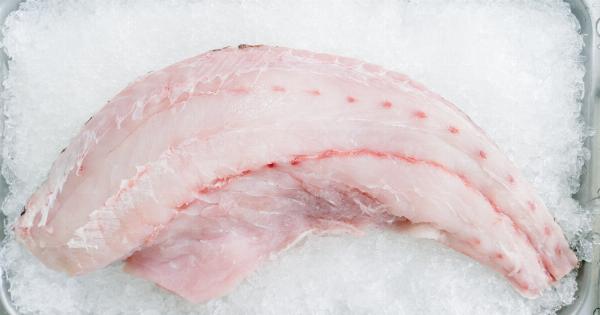When it comes to seafood, selecting the best fish is crucial for creating delicious dishes. Whether you’re a home cook or a professional chef, understanding how to identify high-quality fish can improve the flavor and texture of your dishes.
In this article, we’ll explore insights from professional chefs on how to select the best fish.
1. Know Your Fish
Before you start shopping for fish, it’s essential to understand the different types of fish available. Different fish have unique flavors and textures, and some fish are more sustainable than others.
Take the time to research the types of fish available in your area and learn about their characteristics. This knowledge will help you make informed decisions when buying fish and creating dishes.
2. Look for Freshness
The freshness of fish is essential for creating delicious dishes. In general, the fresher the fish, the better the flavor and texture. Look for signs of freshness, such as clear eyes, bright red gills, and shiny skin.
The flesh should be firm to the touch and have a mild ocean smell. Avoid fish that have dull, sunken eyes, discolored gills, or a fishy odor.
3. Choose Sustainable Fish
Sustainability is a critical factor to consider when selecting fish. Overfishing and fishing practices that damage the environment have led to declines in fish populations.
Choosing sustainable fish supports responsible fishing practices and helps protect the future of fish populations. Look for fish that are certified by organizations like the Marine Stewardship Council, which promotes sustainable fishing practices.
4. Consider the Season
Seasonality is an essential factor to consider when selecting fish. Different fish are more abundant and fresh during certain times of the year. To ensure that you’re getting the freshest fish possible, buy fish that’s in season in your area.
This will also help support local fisheries and reduce the environmental impact of shipping fish from other areas.
5. Check the Texture
The texture of fish is a key factor in creating delicious dishes. Fresh fish should feel firm to the touch, with a smooth, moist texture. Avoid fish that feels slimy or mushy, as this is a sign that it’s not fresh.
When cooking fish, the texture should be tender and flaky, with a good balance of moisture. Overcooked fish can become dry and tough.
6. Consider the Flavor
The flavor of fish is crucial for creating delicious dishes. Some fish, like salmon and tuna, have a strong, distinct flavor, while others, like cod and halibut, have a milder flavor.
Consider the flavor of the fish when selecting it and think about how it will pair with your other ingredients. For example, a strong-flavored fish like salmon can pair well with bold spices or citrus flavors, while a milder fish like halibut can work well with delicate herbs and butter.
7. Ask Your Fishmonger
Your local fishmonger can be a valuable resource when selecting fish. They can provide information on the different types of fish available, their characteristics, and how to prepare them.
They can also help you choose the freshest fish available and provide advice on cooking techniques. Don’t be afraid to ask your fishmonger for guidance and information.
8. Consider the Cut
The cut of the fish can affect its flavor and texture. For example, a thicker cut of fish will take longer to cook than a thinner cut. Think about the final dish you’re preparing and choose a cut of fish that will work well with it.
If you’re making a stew or soup, for example, a firm, meaty fish like halibut or cod can work well.
9. Avoid Farmed Fish
Farmed fish can be lower in quality than wild-caught fish. Farmed fish are often raised in crowded, unsanitary conditions and can be fed an unnatural diet that affects their flavor and texture.
They may also contain higher levels of contaminants like mercury. Whenever possible, choose wild-caught fish instead of farmed fish.
10. Trust Your Senses
When it comes to selecting fish, your senses are your best tool. Look for signs of freshness, consider the season, and trust your sense of taste and smell.
With a little knowledge and experience, you can learn to identify high-quality fish and create delicious seafood dishes.






























